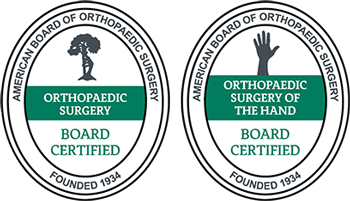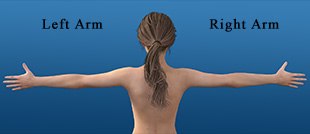What is Kienbock’s Disease, and How Can it Be Treated?
Blockage of the blood supply to the lunate, a small carpal bone in the wrist, can cause stiffness and pain. This condition, known as Kienböck’s disease, leads to the death of all or part of this bone over months or years. It can eventually collapse, leading to wrist immobility, pain, and arthritis in surrounding bones. Medical treatment, including surgical and non-surgical options, may help resolve the symptoms of Kienböck’s disease.
Contents
Symptoms of Kienböck’s Disease

The characteristic symptoms of Kienböck’s disease include pain and swelling in the wrist, directly over the bone at the top of the hand. You may notice reduced grip strength when you try to make a fist or a decreased range of motion in the wrist joint. Some people experience grinding or cracking sounds when they move their wrists, a symptom called crepitation.
Kienböck’s disease is a progressive health issue, which means it worsens over time. It generally moves through four stages as follows:
- Stage 1: The disease develops when the lunate first loses blood supply to the bone during this stage. As the bone weakens, your wrist may feel tender or sore. Although an X-ray can’t diagnose Kienböck’s at this stage, your doctor may order an MRI to reveal a possible blood flow blockage.
- Stage 2: The bone hardens in this stage, which increases symptoms such as pain, stiffness, and mobility loss. At this point, the bone would appear bright white on an X-ray, which signifies osteonecrosis. You may also notice swelling, pain, or tenderness when you try to use your wrist.
- Stage 3: At this point, the damaged bone begins to crumble apart and shift out of place. In stage 3, pain tends to increase while grip strength and mobility worsen. Some providers define stage 3A as the phase when the bone breaks apart, while in stage 3B, it starts to shift out of place.
- Stage 4: This stage is categorized by the lunate’s complete collapse, which may damage the surrounding bones, tendons, and ligaments.
You may progress through the first stage of this disease for several years before you have wrist pain or other symptoms.
Causes of Kienböck’s Disease
Anyone can develop Kienböck’s disease, but it most often affects men ages 20 to 40. Factors that may cause this rare condition include the following:
- Complications of underlying medical conditions, including blood disorders such as sickle cell anemia, lupus, and cerebral palsy.
- Anatomical conditions include an irregularly shaped lunate bone or an ulna bone shorter than the radius bone in your forearm.
- A history of wrist injury from an accident, fall, sports impact, or other type of trauma.
Diagnosis of Kienböck’s Disease
If you experience the symptoms of Kienböck’s disease, seek medical attention. Your physician will ask questions about the type of pain you have, how long it has occurred, whether you injured the area in the past, and whether you have other symptoms. They’ll also order imaging tests to diagnose this issue and rule out concerns with similar symptoms. Your provider may recommend a CT scan, MRI, X-ray, or bone scan to gather more information before recommending treatment.
Non-Surgical Treatment for Kienböck’s Disease
During the first stages of the disease, conservative treatments often relieve pain and other symptoms. Your doctor may recommend taking over-the-counter anti-inflammatory medications such as ibuprofen or aspirin to reduce your discomfort. They may also use a cast to immobilize the wrist, which reduces pressure on the bone.
Surgical Treatment for Kienböck’s Disease
If your symptoms worsen over time and you no longer respond to conservative therapies, you may decide to have surgical treatment for Kienbock’s disease at your doctor’s recommendation. After having surgery for this condition, your wrist will take up to four months to recover. Most people can return to most or all of their normal activities at that time.
As you recover, you’ll attend follow-up visits to ensure proper healing of the surgical site. Your surgeon will recommend a splint to keep the bones from moving during recovery. You’ll also attend physical therapy to restore movement and strength to your wrist joint.
Depending on the extent of osteonecrosis and other factors such as your lifestyle, health status, and personal preferences, your surgeon may perform one of several procedures.
Revascularization
With this early-stage surgery, the surgeon restores blood flow to the lunate by adding blood cells from other parts of the wrist.
Proximal Row Carpectomy
This surgery addresses arthritis that forms in the last stage of the disease. With a proximal row carpectomy, the surgeon removes four of the eight wrist bones to reduce compression and pain. Although this surgery limits wrist mobility, most patients who have it experience pain relief.
Intercarpal Fusion
The surgeon fuses the lunate with an adjacent wrist bone to prevent painful friction that can further damage the bones. They may also perform a revascularization procedure at the same time. Partial fusion involves fusing two or more of the wrist bones, while total fusion creates a single structure from all the separate wrist bones. Like a carpectomy, this procedure tends to reduce pain but limits mobility.
Lunate Excision
With this procedure, the surgeon removes all or part of the lunate. They may add surgical instrumentation or a bone graft to stabilize the wrist.
Joint Leveling
If your symptoms result from a length discrepancy in the bones of the forearm (ulna and radius), your surgeon may recommend this procedure. Depending on your specific anatomy, they may either shorten one of the bones by removing a portion or add a bone graft to make one of the bones longer.
Taking Care of Kienböck’s Disease
Receiving prompt treatment for Kienbock’s disease can help prevent the disease from progressing. When you visit the Hand and Wrist Institute in Dallas and surrounding areas, you’ll receive care from a specialized physician with more than two decades of experience. Contact us today to schedule your appointment so we can review your symptoms and make a treatment plan that works for your lifestyle.
Close-Up Photo of a Woman Stretching Her Wrist by Kindel Media licensed with Pexels License

























